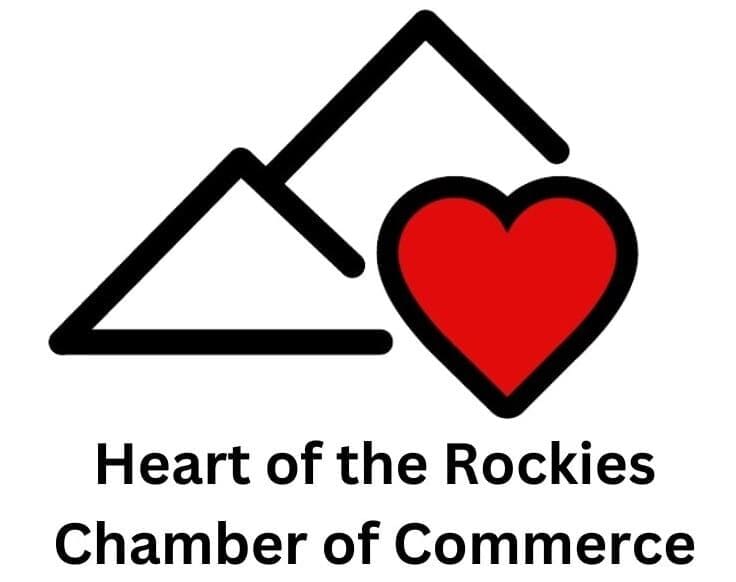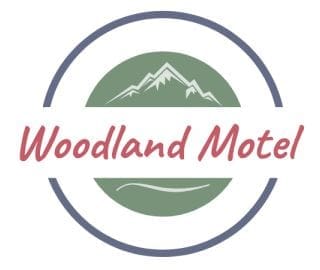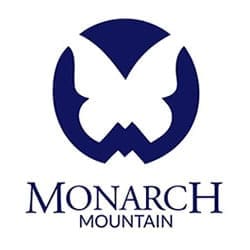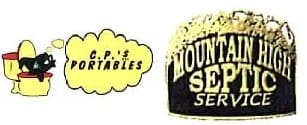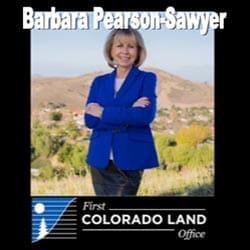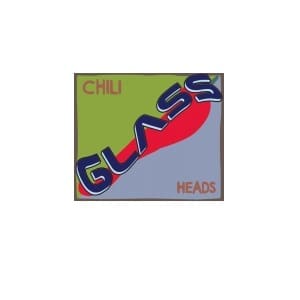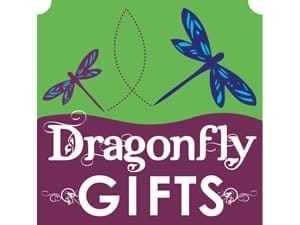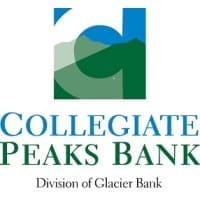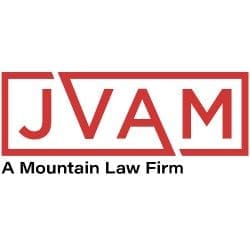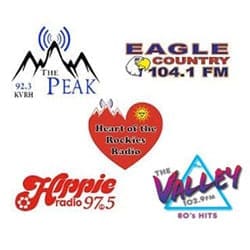Browns Canyon National Monument recognized as stargazing destination with new Dark Sky Park status
SALIDA, Colo., Dec. 16, 2024 – Browns Canyon National Monument in Colorado has been certified as an International Dark Sky Park by DarkSky International. The monument now joins the growing list of International Dark Sky Places known for undertaking dark-sky conservation and education efforts through management of all exterior lighting and promoting best practices to visitors and nearby communities through interpretive programming. Browns Canyon National Monument now becomes Colorado’s 18th certified International Dark Sky Place, and its 12th International Dark Sky Park.
“Browns Canyon National Monument is a haven for dark skies in central Colorado, a region that continues to push for stronger protections of the precious natural resource of the night sky,” said DarkSky International Program Associate Michael Rymer. “Browns Canyon’s example will no doubt be a substantial one in influencing communities surrounding the national monument and beyond to practice responsible outdoor lighting to better impact the night-time environment of the site. Furthermore, the staff’s ingenuity in bringing the monument’s lighting into full compliance is something worthy of praise and promotion.”
Browns Canyon has many outstanding characteristics, including a scenic river corridor, impressive wilderness areas and numerous recreational opportunities. It is an area rich in history and is highly valued by Indigenous and First Nations people for its deep cultural significance. It was designated as a national monument on Feb. 19, 2015, by President Barack Obama. Currently, the land is jointly managed by the U.S. Department of Agriculture Forest Service and the Bureau of Land Management. River-based recreation is managed by Colorado Parks and Wildlife through the Arkansas Headwaters Recreation Area.
Browns Canyon National Monument encompasses a section of the Arkansas River and includes nearly 22,000 acres of pristine public lands. Just a short drive from major urban centers, the monument is located in Chaffee County—an area known for spectacular daytime recreational opportunities. As a Dark Sky Park, its special night sky viewing opportunities are now recognized.
“We’re thrilled for Browns Canyon to receive the night sky designation as it is in direct alignment with our management goal to protect the Monument’s resources,” said Pike-San Isabel National Forests and Cimarron and Comanche National Grasslands Deputy Forest Supervisor Jim Pitts. “This is a great opportunity to highlight a shared landscape between the Forest Service and the Bureau of Land Management, and we welcome the public to enjoy this unique landscape that is part of our shared public lands.”
The effort to seek DarkSky certification was organized by a local advocacy group, Friends of Browns Canyon. The group hosted night sky events, including fundraisers, concerts and photography outings. They also conducted the light meter readings and hired a contractor to assist them in developing the application.
“Friends of Browns Canyon were instrumental in getting the International Dark Sky Park certification and recognition, and should really be applauded for their tireless efforts,” said Bureau of Land Management National Monument Manager for Browns Canyon Kalem Lenard. “All of the managing partners are really excited to celebrate the dark sky resource, further recognizing Browns Canyon as a special place in the heart of Colorado.”
Since the location is naturally suited for night sky viewing, the work required to meet standards for DarkSky certification was minimal. “Because we have a lot of camping in the area, we had to retrofit some of our lighting near Browns Canyon National Monument to make sure we met certification standards,” said Tom Waters, Park Manager for the Arkansas Headwaters Recreation Area. “With a bit of ingenuity from our staff, and some exceptional coordination with our local and federal partners, we have been able to provide this exciting opportunity to our community and visitors.”
The Bureau of Land Management and Arkansas Headwaters Recreation Area are training staff to deliver night sky programming and to educate visitors on the expanded recreation options being offered in the area.
About the International Dark Sky Places Program: Founded in 2001, the International Dark Sky Places Program is a non-regulatory and voluntary program encouraging communities, parks, and protected areas worldwide to preserve and protect dark sites through effective lighting policies, environmentally responsible outdoor lighting, and public education. When used indiscriminately, artificial light can disrupt ecosystems, impact human health, waste money and energy, contribute to climate change, and block our view and connection to the universe. Browns Canyon National Monument now joins more than 220 places that have demonstrated robust community support for dark sky advocacy and strive to protect the night from light pollution. Learn more by visiting https://darksky.org/what-we-do/international-dark-sky-places/.
About DarkSky International: The mission of DarkSky is to preserve and protect the nighttime environment and our heritage of dark skies through environmentally responsible outdoor lighting. Learn more at https://darksky.org.
Christmas tree permits now available on Pike-San Isabel National Forests
PUEBLO, Colo., Nov. 15, 2024 — The Leadville, Salida, San Carlos, South Park, South Platte and Pikes Peak ranger districts are selling Christmas tree permits for the upcoming holiday season. Permits can be purchased online through Recreation.gov. There is an additional $2.50 processing fee for all online purchases. Recreation.gov offers maps of designated cutting areas as well as tips for selecting and cutting trees. Permitted dates and areas vary, so it is important to carefully read all information prior to purchasing.
Tree permit availability, cost, and limits by district:
Leadville, Salida, and San Carlos ranger districts—Tree permits are available online and at the district office. The cost is $10 per tree permit with a limit of two permits per family. Cash, checks and credit cards accepted (cash or check only for Westcliffe and La Veta offices).
- South Park Ranger District—Tree permits are available online and at the district office. The cost is $20 per tree permit with a limit of five permits per family.
- South Platte Ranger District—Tree permits are available online only; a limited number is available. The cost is $20 per tree permit with a limit of five permits per family.
- Pikes Peak Ranger District—Tree permit sales will begin online November 29, and will also be available for purchase at the district office on December 2, between 8 a.m. to 4:30 p.m. The cost is $20 per tree permit with a limit of five permits per family.
All fourth graders are eligible for a free Christmas tree permit as part of the national Every Kid Outdoors initiative. First, obtain an Every Kid Outdoors voucher or pass at https://everykidoutdoors.gov. Then, apply for the Christmas tree permit at Christmas Tree Permits – Recreation.gov where you can search for the forest by name. Click on Purchase Tree Permit. Enter information and check “I have a fourth grade Every Kid Outdoors Pass.” Enter voucher or pass number when prompted. Please note, this Every Kid Outdoors pass does not waive the $2.50 Recreation.gov purchase processing fee.
When venturing out to cut a Christmas tree, make sure to be on National Forest lands and on the correct ranger district. Bring a printed copy of the permit or Christmas tree tag along with a paper map as cell service may be unavailable. It is important to read all the instructions on where trees can or cannot be cut. Contact your local district for all guidelines and restrictions for that area. District office contact information can be found at https://www.fs.usda.gov/contactus/psicc/about-forest/contactus.
Forest Service roads are generally not plowed and some roads close seasonally. Handsaws and axes are the only tools allowed; chainsaws are prohibited. Dress in warm layers, bring a rope to secure the tree to the vehicle and enjoy the tradition. For more information about the Christmas tree program, visit https://www.fs.usda.gov/detail/psicc/passes-permits/?cid=stelprdb5103584.
Pike-San Isabel National Forests & Cimarron and Comanche National Grasslands prepares for prescribed pile burning:
Pueblo, Colo., Oct. 1, 2024 — The Pike-San Isabel National Forests & Cimarron and Comanche National Grasslands plans to conduct prescribed pile burning on National Forest System lands on all ranger districts beginning November 2024 through spring of 2025, as conditions allow. Prescribed burning of slash piles on the administrative unit will take place at the following locations:
Salida Ranger District
- Cleveland Mountain Piles – between County Road 210 and U.S. Highway 285 (Chaffee County).
Leadville Ranger District
- Railroad Bridge Piles – between County Road 371 and County Road 375 (Chaffee County).
Slash piles consist of small trees, treetops and limbs that were cut and piled during hazardous fuel management projects or other vegetation management projects. Ignitions will occur only when weather and fuel conditions meet established parameters and when smoke impacts can be managed within state requirements. Ignition operations may continue for several days or weeks depending on the number of piles being burned. Fire personnel will monitor the burns until the fires are completely out.
The goals of prescribed fire projects are to reduce the accumulation of hazardous fuels and to restore and maintain healthy and diverse forest ecosystems and wildlife habitat. Prescribed fire is an important tool to lessen the risk of wildfire across the landscape and can help prevent high severity wildfires by reducing buildup. Prescribed fire creates less of a smoke impact than wildfire and can help reduce the occurrence of wildfire-related smoke in the treated areas. Once the prescribed fire begins, smoke may be present for several days or weeks in the general project area. Prescribed fire smoke may affect people’s health. For more information, visit https://cdphe.colorado.gov/wood-smoke-and-your-health.
Follow @PSICC_NF on X and Facebook for up-to-date information on active prescribed fire projects. For more fire resources, please visit https://www.fs.usda.gov/detail/psicc/fire/?cid=fseprd667411.
Oct. 1, 2024 — Leadville Ranger District solicits outfitting and guiding services: The Leadville Ranger District of the Pike-San Isabel National Forests & Cimarron and Comanche National Grasslands is accepting applications for a priority outfitting and guiding special use permit through a competitive selection process, or prospectus. Six hundred service days are available in this prospectus for summer day use hiking on Mount Elbert on the South Elbert Trail #1481 and North Elbert Trail #1484.
A service day is an allocation of use constituting a day or any part of a day on National Forest System lands for which an outfitter or guide provides services to a client. The total number of service days is calculated by multiplying each service day by the number of clients on the trip.
Applicants must submit one paper copy and one electronic copy of the completed application package and supporting documents by 4:30 p.m. MST on Jan. 15, 2025.
The electronic copy should be sent to Rebekka Gardiner at rebekka.gardiner@usda.gov. The paper copy should be sent to District Ranger Patrick Mercer at the Leadville Ranger District to the attention of Rebekka Gardiner at 810 Front Street, Leadville, Colo., 80461.
All prospective applicants are advised to read the prospectus carefully. The prospectus documents and application information are available at https://www.fs.usda.gov/detail/psicc/passes-permits/?cid=FSEPRD1206746.
“The use and need we’re seeing on Mount Elbert has created a business opportunity with an outdoor education component,” said Mercer. “Outfitters and guides double as teachers of responsible land use ethics. The knowledge they share keeps giving back to the land.”
For more information, contact Special Uses Administrator Rebekka Gardiner at Leadville Ranger District at 719-486-0749.
Forest resilience and firewood thanks to Threemile Creek forest health project: The Salida Ranger District of the Pike-San Isabel National Forests & Cimarron and Comanche National Grasslands completed a forest health project in the Threemile Creek and Browns Creek areas off Forest Service Road 272 near Nathrop, Colo. The intent of this project is to create forest conditions that are more resilient to insect infestations, lessen disease susceptibility and reduce the likelihood of high intensity wildfire.
The timber from this project is decked and available to the public for firewood with the purchase of a fuelwood permit beginning July 1, 2024. Fuelwood permits are available for purchase on the Salida Ranger District annually from June 1 through Nov. 30. Fuelwood tags and maps of the designated cutting areas are issued with the fuelwood permit. All loads of firewood must be tagged with a valid fuelwood tag. Cutting fuelwood without a valid permit is punishable by a fine. The cost for a fuel wood permit is $10 per cord with a minimum purchase of three cords. Personal use fuelwood permits can be purchased at the Salida Ranger District Office at 5575 Cleora Rd, Salida, Colo. 81201.
This project was completed using mechanical treatments that included a combination of thinning and regeneration harvests using the cut-to-length harvesting equipment. In the cut-to-length method, two machines are used, called a harvester and forwarder. The harvester cuts down, delimbs, and measures the trees, cutting them into lengths. The forwarder moves the trees to the desired staging location. The harvester has a crane arm that can reach approximately 30 feet, which enables efficient selective thinning. In selective thinning, a dense forest stand is thinned, and the healthiest trees are left to grow.
“Since the harvester can delimb the trees in the forest, the nutrition-rich top and limb slash are left behind,” said Timber Sale Administrator for the San Isabel National Forest Justin Anderson. “This gives the trees left growing, or the new seedlings that sprout, the benefits of added nutrients to the soil.”
Top and limb slash consists of leaves, needles, branches and tops of the trees that have been harvested. Slash is also placed on the driving path to reduce the strain of the machine on the terrain. The cut-to-length method is more efficient, uses less equipment and leaves less of an impact to the ground than traditional logging equipment.
“There is no zero-sum game where one resource benefits and another is impacted with this work,” said Salida District Ranger Perry Edwards. “I see benefits to all resources and people who get easy access to firewood.”
For more information on the San Isabel National Forest fuelwood program visit, https://www.fs.usda.gov/detail/psicc/about-forest/districts/?cid=fseprd563989.
